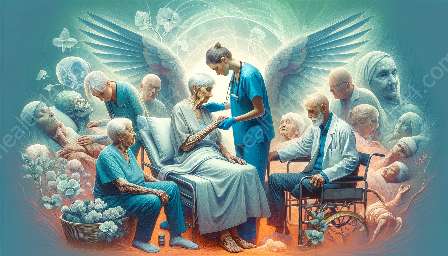As individuals age, changes in mobility can have a significant impact on their overall well-being. It is essential to explore strategies that facilitate optimal aging and successful aging while addressing age-related mobility challenges. In this topic cluster, we will delve into practical approaches to managing age-related mobility changes and the role of geriatrics in this context.
Understanding Age-Related Mobility Changes
Age-related mobility changes encompass a broad spectrum of physical and functional alterations that occur as individuals grow older. These changes can affect gait, balance, muscle strength, flexibility, and overall physical performance. Common age-related mobility challenges include an increased risk of falls, reduced walking speed, and difficulties in performing activities of daily living.
It is crucial to recognize that these changes are not inevitable and can be managed effectively with the right strategies and interventions.
Implementing Physical Activity and Exercise
Engaging in regular physical activity and exercise is fundamental for managing age-related mobility changes. Strength training, flexibility exercises, and balance-enhancing activities can help improve muscle mass, bone density, and coordination, thereby promoting better mobility and reducing the risk of falls.
Geriatricians play a pivotal role in prescribing tailored exercise regimens that align with the specific needs and abilities of older individuals. Personalized exercise plans can enhance mobility, endurance, and overall physical function, contributing to optimal aging outcomes.
Utilizing Assistive Devices and Technology
Assistive devices and technological innovations can significantly support individuals in managing age-related mobility changes. Mobility aids such as canes, walkers, and mobility scooters can improve stability and confidence during daily activities. Furthermore, advancements in wearable technology and smart home devices offer solutions for monitoring and enhancing mobility while promoting independent living among older adults.
Geriatric specialists can guide older individuals and their caregivers in selecting and using appropriate assistive devices and technology to optimize mobility and ensure a safe living environment.
Embracing Multidisciplinary Approaches
Managing age-related mobility changes often requires a coordinated, multidisciplinary approach. Collaborative efforts involving geriatricians, physical therapists, occupational therapists, and other healthcare professionals can address the multifaceted needs of older individuals experiencing mobility challenges.
Through comprehensive assessments and personalized care plans, multidisciplinary teams can address underlying musculoskeletal conditions, neurological impairments, and cognitive factors that influence mobility. These efforts aim to maximize functional independence and quality of life, aligning with the principles of successful aging.
Promoting Lifestyle Modifications and Environmental Adaptations
Integrating lifestyle modifications and environmental adaptations is essential for managing age-related mobility changes. Simple adjustments to home environments, such as removing tripping hazards and installing grab bars, can create safer living spaces for older adults. Additionally, educating individuals about proper footwear, vision care, and nutrition contributes to holistic mobility management.
Geriatric-focused interventions emphasize the significance of creating age-friendly environments and fostering healthy lifestyle behaviors to support optimal aging and successful aging among older individuals.
Empowering Self-Management and Self-Care
Empowering older adults to take an active role in managing their mobility is a fundamental aspect of successful aging. Education on self-management strategies, fall prevention techniques, and self-care practices enables individuals to maintain a sense of control over their mobility-related challenges.
Geriatrics professionals advocate for empowering older adults with the knowledge and skills needed to make informed decisions about their mobility, thereby promoting self-efficacy and resilience in the face of age-related changes.
Emphasizing Continuity of Care and Follow-Up
Continuity of care and regular follow-up play a crucial role in managing age-related mobility changes. Geriatric care providers emphasize the importance of ongoing assessment, monitoring, and adjustment of interventions to address evolving mobility needs.
By fostering continuity of care, older individuals receive consistent support and guidance to navigate their mobility challenges, promoting long-term well-being and successful aging outcomes.
Conclusion
Effectively managing age-related mobility changes is vital for promoting optimal aging and successful aging among older individuals. By implementing physical activity, utilizing assistive devices, embracing multidisciplinary approaches, promoting lifestyle modifications, empowering self-management, and emphasizing continuity of care, older adults can navigate their mobility challenges while maintaining independence and overall well-being. The role of geriatrics in this context is integral, as the field focuses on providing comprehensive, person-centered care to optimize mobility and enhance the aging experience.


